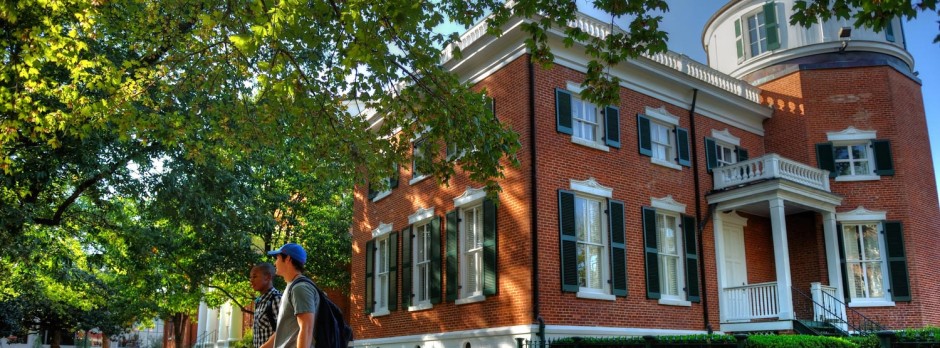Uncategorized
Vassallo: Barnard Observatory Among Most Beautiful on Campus
One of the most interesting buildings in Mississippi, not just on the Ole Miss campus, is Barnard Observatory.
It’s impossible to understand the history of the building without first understanding the man behind its name. Former University of Mississippi Chancellor Frederick A.P. Barnard had a vision for the school that was the catalyst for the observatory being built.
Born in Massachusetts in 1809, Barnard became the third Chancellor at University of Mississippi. He graduated second in his class at Yale in 1828 even though he had a severe hearing impairment. In 1837, the President of the University of Alabama offered Barnard the Chair of the mathematics and natural philosophy departments where he remained for 16 years. There he met his wife Margaret McMurray whom he married in 1847.
In 1854, he arrived at Ole Miss to chair the chemistry, mathematics and astronomy departments. He devoted himself in making Ole Miss one of the preeminent universities in the country. Two years after his arrival Chancellor Longfellow submitted his resignation to the Board of Trustees which created a hotly contested environment for the next Chancellor. Barnard was the ultimate choice primarily due to the fact that he was also the priest at St. Peter’s Episcopal Church in Oxford and most all of the trustees were Episcopalians.
Chancellor Barnard had a vision for Ole Miss in which astronomy would be a primary focus. Barnard Observatory was made possible due to a $100,000 loan from the state legislature. Construction began in 1857 and completed in 1859. The U.S. Astronomical Observatory was then owned and operated by the University of Mississippi. One of its initial objectives was to house an 18.5 inch refractor lens that had been designed in France. According to historical accounts, the shipment of the lens was confiscated by union troops during the Civil War and taken to Northwestern University’s Dearborn University where it remains today.
Barnard Observatory has served many purposes. During the Civil War many soldiers, both Northern and Southern, were treated in the 39,200 square foot building for wounds incurred in battle. It has functioned as the Chancellor’s residence up until 1971, as a sorority house (the rear of the building is actually on Sorority Row), as an academic lecture hall, as the Naval ROTC headquarters (1947-89) in the west wing and currently the Center for the Study of Southern Culture.
Returning to Barnard himself, he apparently was greatly opposed to the South leaving the union and once that was imminent he resigned his position and he and his wife left for the North. Eventually, he would become President of Columbia University.
The Greek Revival building remains one of the most beautiful and interesting of all buildings on campus and with its history, it’s easy to understand why!
Credits are extended to Wikipedia and the University of Mississippi for providing the historical information referenced in this article.
Steve Vassallo is a HottyToddy.com contributor. Steve writes on Ole Miss athletics, Oxford business, politics and other subjects. He is an Ole Miss grad and former radio announcer for the basketball team. Currently, Steve is a highly successful leader in the real estate business who lives in Oxford with his wife Rosie. You can contact Steve at sovassallo@gmail.com or call him at 985-852-7745.
































Anonymous
July 21, 2015 at 3:59 pm
Another good article from Mr. Vassallo about the “Buildings of Ole Miss”….Thanks!
John
July 21, 2015 at 7:17 pm
This article was very informative to me ! Thank you so much, for informing me as well as other the History, of this wonderful building !
Jim Hays
July 24, 2015 at 8:26 am
I had my physics class there in 1947, my sophamore year.
(Vaught’s 1st year as head coach) Later took the astronomy course (3 hours credit, I believe). I remember well, going back at night, lining up to look at the skies thru the telescope during this class. Beautiful building! Nice story…….Thanks.